Ouroboros: Ancient Infinity Symbol Used By Different Ancient Civilizations
A. Sutherland - AncientPages.com - Today, modern physicists try to unravel the mystery of time. Was there a beginning of time, and will there be an end of time?
The riddle of time has also fascinated our ancestors. Many ancient civilizations believed in the concept of infinity and had different ideas about how to explain its nature.

An ouroboros in a 1478 drawing in an alchemical tract. Anonymous medieval illuminator. Image credit: uploader Carlos adanero - Public Domain
The earliest recorded idea of infinity comes from Anaximander, a pre-Socratic Greek philosopher who lived in Miletus. He used the word apeiron, which means "end, limit".
Examination of ancient texts reveals that many people had one ancient symbol in common to express the thought of infinity – the Ouroboros.
Ouroboros is an ancient infinity symbol that has been used widely in many different cultures throughout history. The symbol is depicted as a snake eating its own tail. The term ouroboros is derived from two words in the ancient Greek language. The first word is “oura,” which means “the tail,” while the second word is “boros,” which means “eating.”
The first known appearance of the ouroboros motif is in the Enigmatic Book of the Netherworld, an ancient Egyptian funerary text in KV62, the tomb of Tutankhamun, in the 14th century BC.
When it was used around 1600 B.C. by the Egyptians for the first time in history, the Ouroboros was considered the symbol of the sun, and it was believed to have represented Aten’s travels (Aten is the sun disk in Egyptian mythology). Through the Egyptians, it was passed on to the Phoenician culture, and through their relations with Phoenicians, it was moved to the culture of Ancient Greek people, who named the infinity symbol in their language as it is used in the present day. Plato described the ouroboros as the first living thing; a self-eating, circular being. Plato considered the universe to be an immortal, mythologically constructed entity.
The origin of the ouroboros symbol is not entirely clear. The serpent may represent the cycle of life and death that the Universe maintains, or it may also symbolize the rebirth of the dead.
 First known representation of the ouroboros on one of the shrines enclosing the sarcophagus of Tutankhamun. Image credit: Djehouty - CC BY-SA 4.0
First known representation of the ouroboros on one of the shrines enclosing the sarcophagus of Tutankhamun. Image credit: Djehouty - CC BY-SA 4.0
Ancient alchemists used the Ouroboros symbol to represent the element mercury, which is known to run through any matter. In the Middle East, the god Mithra, who was believed to be reborn, was sometimes depicted with an Ouroboros around his waist or encircling his whole body.
In ancient India, the Ouroboros symbol was used to depict an animal halo, often in the form of a snake or lizard god or goddess. Shiva, who represents the duality of creation and destruction and thus the birth of life through opposites, is often represented within a circle. The circle is s symbol of the circular nature of the universe and time: death-rebirth, creation-destruction, love-hate, spring-winter; the eternal dance of the cosmos.
In ancient China, the Universe was believed to be created by the union of the two opposites, the Earth and the Heaven. As two powerful realms, the Earth and the Heaven united to deliver the creation of the universe
In Norse mythology, the Ouroboros appears as the serpent Jörmungandr, one of the three children of Loki and Angrboda, which grew so large that it could encircle the world and grasp its tail in its teeth. In the North American culture, the infinity symbol was seen in some carvings in the ruins left behind by the Aztecs. Quetzalcoatl, “the feathered serpent God” of the ancient North American culture, was sometimes depicted as a serpent devouring its own tail.
The infinity symbol Ouroboros is encountered in almost every ancient culture. The Milky Way galaxy has been suggested as the source of inspiration for the symbol. In mythology, the myths regarding the infinity symbol tell us that a serpent of light lives in Heaven.
In these myths, the Milky Way galaxy, shaped like a circle, was considered this serpent. Time has always fascinated humans, and cosmologists have long sought to discover whether infinity exists in our physical universe.
Updated on March 7, 2024
The first version of this article was originally published on March 20, 2016
Written by – A. Sutherland AncientPages.com Senior Staff Writer
Copyright © AncientPages.com All rights reserved. This material may not be published, broadcast, rewritten or redistributed in whole or part without the express written permission of AncientPages.com
More From Ancient Pages
-
 Long-Lost Burial Site Of Viking King Harald Bluetooth Discovered By Satellites?
Archaeology | Jun 29, 2022
Long-Lost Burial Site Of Viking King Harald Bluetooth Discovered By Satellites?
Archaeology | Jun 29, 2022 -
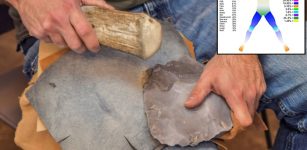 Early Humans Risked Life -Threatening Flintknapping Injuries – Long-Lasting Tradition
Archaeology | May 26, 2023
Early Humans Risked Life -Threatening Flintknapping Injuries – Long-Lasting Tradition
Archaeology | May 26, 2023 -
 New Species Of Softshell Turtle That Lived In North Dakota 66.5 Million Years Ago With Dinosaurs Discovered
Fossils | Mar 14, 2022
New Species Of Softshell Turtle That Lived In North Dakota 66.5 Million Years Ago With Dinosaurs Discovered
Fossils | Mar 14, 2022 -
 Why Are Christmas Ghost Stories So Fascinating?
Christmas Traditions | Dec 24, 2019
Why Are Christmas Ghost Stories So Fascinating?
Christmas Traditions | Dec 24, 2019 -
 Unique Life-Sized Camel Carvings In Northern Arabia Are Much Older Than Previously Thought
Archaeology | Sep 15, 2021
Unique Life-Sized Camel Carvings In Northern Arabia Are Much Older Than Previously Thought
Archaeology | Sep 15, 2021 -
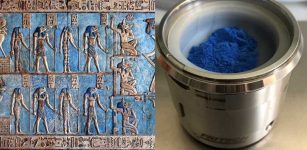 Ancient Egyptian Blue Used To Create New Nanomaterial 100,000 Times Thinner Than A Human Hair
Ancient Technology | Mar 24, 2020
Ancient Egyptian Blue Used To Create New Nanomaterial 100,000 Times Thinner Than A Human Hair
Ancient Technology | Mar 24, 2020 -
 Ancient Desert Mystery – Did Thousands Vanish Without A Trace Because Of An Ominous Prophecy And Revenge?
Ancient Mysteries | Nov 28, 2022
Ancient Desert Mystery – Did Thousands Vanish Without A Trace Because Of An Ominous Prophecy And Revenge?
Ancient Mysteries | Nov 28, 2022 -
 Massive Underground Anomaly – Iron Ages Temples And Seat Of Legendary Ulster Kings Discovered At Navan Fort?
Archaeology | Jul 21, 2020
Massive Underground Anomaly – Iron Ages Temples And Seat Of Legendary Ulster Kings Discovered At Navan Fort?
Archaeology | Jul 21, 2020 -
 Why Were These People Buried In A Remote, Unmarked Grave In New Hampshire In The Mid-1800s?
Archaeology | Nov 4, 2024
Why Were These People Buried In A Remote, Unmarked Grave In New Hampshire In The Mid-1800s?
Archaeology | Nov 4, 2024 -
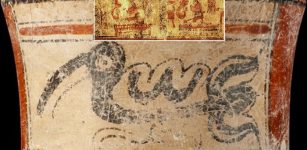 Non-Royal Elite Burial And Deciphered Hieroglyph Reveal Privileged And Hard Life Of Maya Ambassador
Archaeology | Mar 18, 2021
Non-Royal Elite Burial And Deciphered Hieroglyph Reveal Privileged And Hard Life Of Maya Ambassador
Archaeology | Mar 18, 2021 -
 Strange Ancient Human Bones And Artifacts Of An Unknown Lost Civilization Found In Nebraska
Featured Stories | Jun 20, 2024
Strange Ancient Human Bones And Artifacts Of An Unknown Lost Civilization Found In Nebraska
Featured Stories | Jun 20, 2024 -
 Strange Ancient Artifacts And Foreigners Who Were Not Meant To Be In North America
Ancient Mysteries | Mar 16, 2020
Strange Ancient Artifacts And Foreigners Who Were Not Meant To Be In North America
Ancient Mysteries | Mar 16, 2020 -
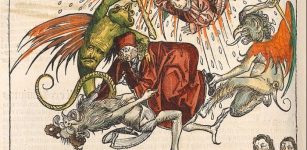 Simon Magus ‘The Magician’ Who Faked Death And Resurrection
Featured Stories | Feb 17, 2022
Simon Magus ‘The Magician’ Who Faked Death And Resurrection
Featured Stories | Feb 17, 2022 -
 Roman Empire’s Emerald Mines In The Egyptian Eastern Desert – New Evidence
Archaeology | Mar 2, 2022
Roman Empire’s Emerald Mines In The Egyptian Eastern Desert – New Evidence
Archaeology | Mar 2, 2022 -
 Mystery Of The Banshee – Is The Celtic Death Messenger Linked To The Tuatha De’Dannan Race?
Celtic Mythology | Oct 25, 2015
Mystery Of The Banshee – Is The Celtic Death Messenger Linked To The Tuatha De’Dannan Race?
Celtic Mythology | Oct 25, 2015 -
 Gravitational Waves Shed Light On The Mysterious Antikythera Mechanism
News | Jun 29, 2024
Gravitational Waves Shed Light On The Mysterious Antikythera Mechanism
News | Jun 29, 2024 -
 Neanderthals And Other Ancient Humans Were Much More Intimate Than Previously Thought – DNA Shows
DNA | Jul 12, 2024
Neanderthals And Other Ancient Humans Were Much More Intimate Than Previously Thought – DNA Shows
DNA | Jul 12, 2024 -
 Fossilized Remains Of A Gigantic Jurassic Pterosaur Unearthed In Oxfordshire, UK
Fossils | Jun 5, 2024
Fossilized Remains Of A Gigantic Jurassic Pterosaur Unearthed In Oxfordshire, UK
Fossils | Jun 5, 2024 -
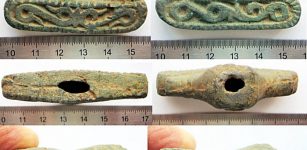 Fragments Of 100 Viking Swords Unearthed In North Estonia – Largest Find To Date
Archaeology | Oct 6, 2019
Fragments Of 100 Viking Swords Unearthed In North Estonia – Largest Find To Date
Archaeology | Oct 6, 2019 -
 Draugr – Vikings Feared This Ugly Living Dead With Prophetic Visions
Featured Stories | May 24, 2020
Draugr – Vikings Feared This Ugly Living Dead With Prophetic Visions
Featured Stories | May 24, 2020
